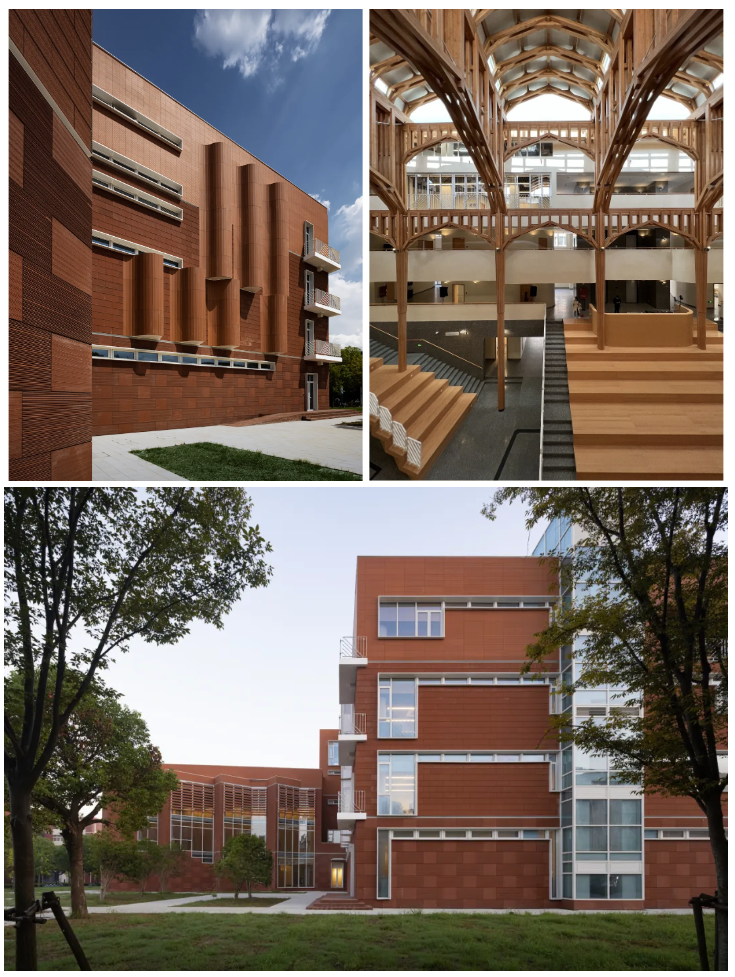

Building on the international education advantages and interdisciplinary strengths of Shanghai Jiao Tong University (SJTU), the School of Design at SJTU offers a Master of Design (International) program. This program focuses on the frontiers of global design and innovation-driven development strategies, aligning with modern industrial needs while grasping the opportunities in the emerging field of artificial intelligence and smart manufacturing. The program offers three main directions: Product Design, Visual Design, and Sustainable Design.
1. The program addresses the needs of global new industrialization. It utilizes SJTU's platforms for intelligent manufacturing, big data, and robotics labs, and collaborates with major international companies. By applying advanced design concepts that are intelligent, sustainable, and integrative, the program focuses on the education and research on physical product design, encompassing high-tech intelligent innovation fields such as smart mobility, intelligent products, connected home, and healthcare.
2. The program focuses on digital entertainment and virtual reality technology, integrating generative artificial intelligence to create a new era of visual design. By combining visual arts with cutting-edge algorithms, the program establishes an experimental platform for the integration of digital games, visuals, and images, blending the virtual and the real. This approach advances the fusion of visual arts and artificial intelligence, developing new directions for visual design education and research.
3. The program centers on the concept of sustainability, integrating innovative design with global sustainable development strategies. It aims to promote sustainable development at the national, regional, and community levels, developing new directions for education and research in sustainable design.
Taking advantage of Shanghai's strategic position as a global innovation center and capital of design, the Master of Design (International) program focuses on the frontiers of global design and innovation-driven development strategies. It aims to cultivate outstanding design experts with cross-cultural and interdisciplinary perspectives, integrating science and art, and bridging technology and humanities, to contribute the wisdom and strength of design to the new industrial revolution.
This program allows domestic students to enjoy world-class design education from SJTU without going abroad, nurturing versatile and excellent talents. The program aims to have four distinctive features:
The curriculum is designed to follow the latest international design trends, focusing on emerging global industries and artificial intelligence while addressing global sustainability issues. It trains students to identify problems from an international perspective and solve them with a cross-disciplinary approach. The program recruits students globally, conducts bilingual teaching, and actively expands cooperation with world-class design schools to create an international classroom and teaching system.
The ratio of professional course credits to professional practice credits is approximately 1:3. It emphasizes the "master-apprentice" training model and adopts a collaborative mechanism with supervisors. This approach encourages students to allocate their time and effort based on their research interests, deepening project practice and creation. The goal is to produce complete, refined, and valuable design results with potential for application and transformation.






In 1986, Shanghai Jiao Tong University founded its faculty of design based on the advice of Qian Xuesen, one of SJTU’s prestigious scholars. In 1999, the faculty began to enroll students in the Master of Design Art program, and in 2011 in the Master of Design as well. In 2015, a cross-disciplinary doctoral program in Design Science and Engineering was established. In December 2017, the university integrated high-quality resources in design subjects, and established the School of Design. Relying on the attributes of the School of Design, the subject group aims to focus on national development strategic requirements, and highlights the advantages and features of Shanghai Jiao Tong University. It is based on a platform of scientific research and talent cultivation that integrates science, technology, the humanities and the arts. It creates a prestigious institutional example of international academic collaboration and gathers together the world's top masters in design. It will eventually form a distinctive international first-class innovative design subject group. In 2018, the first batch of doctoral programs in Design in China was independently added.
The School of Design relies on the strong foundation of engineering subjects in Shanghai Jiao Tong University and aims to represent the forefront of academic standards. It is inspired by leading examples of strategic emerging industries such as smart manufacturing, digital innovation, and green low-carbon. It builds a "design" + development strategy with a cross-disciplinary background. The school has earned first and second place prizes for its teaching achievements in Shanghai multiple times. It has also published national planning textbooks, and won the national "double creation" demonstration platform award, as well as the Shanghai "innovative design" cultural and creative practice base prize. Many of our students were awarded the red dot, IF, IDEA and other internationally renowned design prizes. Our graduates have also been honored as national model workers, as Shanghai's top ten high-end creative talents, selected for Forbes China's elite list for those under 30-years-old, and more.
Global breadth is one of the essential characteristics of a tertiary education. The School of Design has established mature collaborative relationships with many world-renowned institutions such as Harvard University, MIT, University of Michigan, Cornell University, McGill University (Canada), University of New South Wales(Australia), Politecnico di Milano(Italy), KTH Royal Institute of Technology (Sweden), Eindhoven University of Technology (Netherlands) and the National University of Singapore. We also have established stable cooperative foundations with universities and research institutions in “Belt and Road Initiative” countries, as well as professional bonds in personnel training, scientific research, and overseas joint research centers.

▲ School of Design Building
According to relevant documents of the Ministry of Finance and the Ministry of Education, master's students enrolled in accordance with the National Graduate Admissions Program are required to pay tuition fees. The tuition for the Master of Design (International) program is RMB 100,000 in total, and the length of the program is 2.5 years.
The program features a full-time study model with a mentorship training approach. Mentors are chosen through a selection process mutually determined by teachers and students within two weeks following the admission of new students.
Please refer to the training plan for the 2025 cohort in the attachment for reference.
Attachment(s):